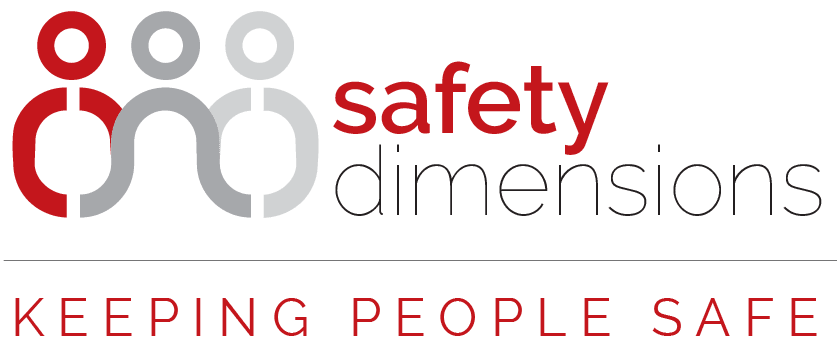Be Your Own Bodyguard – Personal & Staff Safety At Home and In Foreign Countries
[Part 1 of 2]
Dr Paul Johnston
Hostile work environments¦..the term invokes images of armed assaults, acts of terrorism, violent street crime, kidnappings, home invasions, and sieges – acts we typically associate with foreign countries when we discuss managing staff WHS. But is this truly accurate? Are these risks that we, as workers, are not exposed to here in Australia?
Unfortunately, a realistic consideration of facts would suggest otherwise. By simply watching and listening to daily media reports, it would appear that threats to personal safety and security are increasing, both in terms of type and frequency – with this not only relating to working in foreign countries, but also locally.
This raises the question as whether we are cognisant of the changes in broader community risk profiles, areas (now referred to as targets) that are now classified as high risk or vulnerable are not those traditionally thought of in this manner (i.e. corporate offices, symbols of capitalism such as hotel/restaurant/café chains). Further, are we, as WHS professionals, prepared to protect our workforces from those personal safety risks associated with the same?
This article explores the basic means by which PCBU’s can be mindful of those issues involved when seeking specialist advice, and highlights the issue of due diligence, and of the need for detailed planning and preparation in managing risks to personal safety.
Under the Work Health and Safety Act (2011), a PCBU (Person Conducting a Business or Undertaking) must ensure, so far as is reasonably practicable, the health and safety of all workers and all other persons affected by the conduct of the business or undertaking.
Whilst this principle is generally well understood by PCBU’s, with business models changing, and organisations ever increasingly employing flexible work hours, satellite/remote offices, and FIFO (Fly In Fly Out) work systems in remote and/or potentially hostile areas, not to mention the constantly changing political landscapes internationally, our ability to achieve our primary obligations are similarly being challenged. Although most organisations arguably have in place sufficient systems capable of managing the mainstream risks associated with WHS, the same cannot be said of their ability to manage the risks associated with the personal safety of staff, be they deployed domestically or abroad, resulting from work practices and operational systems.
Whilst many PCBU’s understandably rely on specialist security providers to advise and protect their staff and property, what can a PCBU do themselves to achieve their due diligence requirements?
More specifically, what issues should a PCBU consider when assessing the risks associated with their staff working in high risk or vulnerable areas, domestic and/or abroad, with a view to then determining the nature of more specialist advice that may be required? After all, although a PCBU is not expected to be an expert with regards to all the WHS risk exposures they face, they must remain mindful of those issues involved as a means of meeting their obligations (which cannot be delegated) – rather than blindly accepting the advice of others.
It is not just a matter of good business, it is due diligence.
So, what are the key issues that PCBU’s should consider with regards to maintaining the personal safety of their staff? In answering this, I suggest we look at the broad (but not exhaustive) range of issues that close protection (bodyguard) teams typically consider in risk profiling and providing protection services for their principals – issues which I have summarised into the acronym P.E.R.S.O.N.A.L. for the purpose of this article.
In detailing these issues, it should be noted that whilst they are focused on assisting organisations with their management of staff WHS overseas, the same concepts can also be used domestically, and on an individual level to enhance your own personal safety, be it work related or otherwise. And, although some of these issues may not necessarily be regarded as being politically correct, the reality is that they are critical in determining risk levels and the associated mitigation strategies:
Personal profile
¢ Rank/role within organisation
¢ Professional background
¢ Level of visibility (ie. mainstream and social media exposure)
¢ Lifestyle characteristics (ie. family details, religion, personal habits)
¢ Personal health issues
Environmental issues
¢ Natural hazards (eg. wildlife, flora, terrain)
¢ Potential natural disasters (eg. bushfires, floods, blizzards, avalanches, earthquakes, volcanic eruptions, cyclones/tornadoes)
Regional stability
¢ System and history of government
¢ Political stability (ie. factions – military, religious)
¢ Economic stability
Safety (public safety, public health)
¢ Crime rates – general (i.e. robbery, assault) and specific (i.e. kidnapping, terrorism)
¢ Public order issues
¢ Public health issues
¢ Regional specific laws, and other restrictions
Operational security
¢ Business security capabilities (i.e. physical security, personal security detachments, access control, ICT security, supply chain security)
¢ Security staff (i.e. level of training, sourcing of staff, equipment and resources)
¢ Public versus private sector agencies
Nature of business operations
¢ Nature and profile of business activities
¢ Local impact of business activities (real and perceived)
Available assistance
¢ Business based assets (i.e. organisation and project based)
¢ Professional networks
¢ NGO (Non-Governmental Organsiations) presence and associated capabilities
¢ Country embassies and consulates
Local infrastructure
¢ Medical facilities (i.e. quality, access, proximity)
¢ Public utilities (i.e. power, water, communications, transport)
In considering these issues, it should be stressed that the intention of this article is not to replace specialist advice, but rather to provide the basic means by which PCBU’s can be mindful of the issues involved when seeking such advice. Again, it is a matter of due diligence, of detailed planning and preparation.
Although security and safety management have traditionally been considered separately, in today’s operating environment, they are much more closely aligned. After all, if a workforce is not secure, how can it be truly safe?
To Part 2 About the Author:
About the Author:
Dr Paul Johnston holds a PhD in Public Safety Risk Management, a Graduate Certificate in Occupational Hygiene Engineering and a Bachelor of Behavioural Science (WHS & Organisational Change Facilitation). Paul also has professional certifications in risk management and anti-terrorism.
With over 20 years of Health, Safety, Environment & Security Risk Management experience in both the public and private sectors, Paul continues to provide operational, management system consulting, research & analysis, and training services to a wide range of industry groups throughout Australia and internationally.
